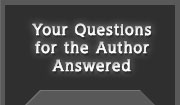Some time back, I wrote that the Republicans were “the party of no.”
Events have proven that description all too true. While Republicans have been accurate in noting weaknesses or errors in law-making and Presidential decision-making by Democrats, the vast majority of Republican “solutions” have largely failed to improve the problems they addressed, and even when they have partially succeeded, as in reducing the number of aliens attempting to enter the United States, the overall costs in other immigration areas have increased.
From what I can glean from reports, as many as twenty to thirty percent of the people picked up by ICE sweeps are either U.S. citizens or individuals here in the U.S. legally, and very few ICE raids actually result in the capture of habitual thieves or hardened criminals, which was what Trump claimed was the objective.
In a similar fashion, the Trump tariffs have so far had little impact in increasing U.S. manufacturing output, while raising the cost of raw materials for U.S. manufacturers. In addition, foreign reaction to those tariffs has been to create huge losses to U.S. farmers, so much so that Trump is now proposing massive subsidies.
Almost random cutting of federal employees hasn’t measurably reduced federal spending, not with massive increases in defense spending.
Negotiations with Putin have failed to result in peace between Russia and Ukraine, unsurprisingly, given that Putin only respects force, and the only people Trump likes to use force against are immigrants, U.S. citizens, particularly women and Democrats, and purported drug-runners in small boats.
The Republican majorities in the House and Senate have yet to pass any significant legislation offering positive steps in any field, only significant cuts in programs designed to help poor and low-income individuals and families. Almost ten years have passed since Trump promised a better national health plan, and there’s no sign of one yet.
Pretty much the only significant “yes” coming from Trump and the Congress has been a large tax cut for the very wealthiest Americans, but that’s about all Americans should expect from the party of no, because merely finding faults in your opponent’s policies is almost never sufficient to significantly improve anything.







